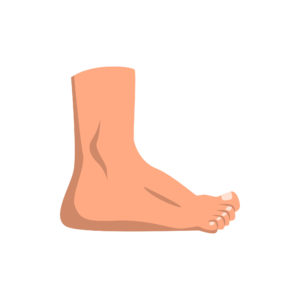 We’ve discussed gout of the toe joints on the blog in the past, but that’s not the only area of your body that can be affected by this inflammatory condition. In fact, another common location for gout problems is in your ankle joint. Below, we take a closer look at why gout develops in the ankle and how you can best treat the condition.
We’ve discussed gout of the toe joints on the blog in the past, but that’s not the only area of your body that can be affected by this inflammatory condition. In fact, another common location for gout problems is in your ankle joint. Below, we take a closer look at why gout develops in the ankle and how you can best treat the condition.
Causes and Symptoms Of Ankle Gout
Similar to when gout develops in the big toe joint, gout of the ankle is caused by the buildup of uric acid in the body. This acid can crystallize in the joints, and these tiny structures can irritate joints and lead to a painful inflammatory reaction. Dietary choices typically increase your risk of developing gout. Foods like red meat, wild game and seafood all increase uric acid production in your body, as does a person’s alcohol intake. Men are more likely to deal with excess uric acid, but after menopause it’s not uncommon for women to see an increase in their uric acid levels.
Symptoms of ankle gout include:
- Pain
- Stiffness
- Limited Range of Motion
- Tenderness
- Redness
- Warmth
Diagnosing and Treating Ankle Gout
If you’re experiencing one or more of the symptoms listed above, consider heading to an ankle and foot specialist to get an official diagnosis, especially if you are trying to rule out other issues or you have underlying health issues that could complicate treatment. If you’re otherwise healthy and have a strong suspicion that gout is the problem, you can also try some of the conservative treatment techniques we’ll talk about below from the comfort of your home.
During your diagnostic exam your doctor will conduct a physical exam of the ankle and ask you to perform some manipulation exercises to check your range of motion. They’ll also review your medical data and ask you a few questions about your diet and any medications you take. They can oftentimes make a determination after the physical exam and questions, but a blood test can be used to confirm high levels of uric acid in the body. Imaging tests for gout are rare, but can be effective.
If you’ve been diagnosed with ankle gout, your doctor will then talk to you about some ways to treat the condition and prevent it from coming back. Most of the changes will be dietary in nature. We’ll talk about your dietary choices, which foods increase and decrease uric acid levels, and we’ll explain how exercise and weight loss can help prevent the buildup of acid in your body. Over-the-counter medications can also help to reduce discomfort caused by a gout flareup, and we can discuss which options might be best for you based on your current medications.
There aren’t any specific exercises that target ankle gout like there are for other foot conditions, and general exercise for weight control is considered the standard. However, if a flareup makes running or walking uncomfortable, strive to do some limited weight bearing exercises like cycling or swimming.
If you follow these tips and work with a professional, we’re confident you can get your gout under control. For more information or for help with your condition, reach out to Dr. Silverman’s office today.